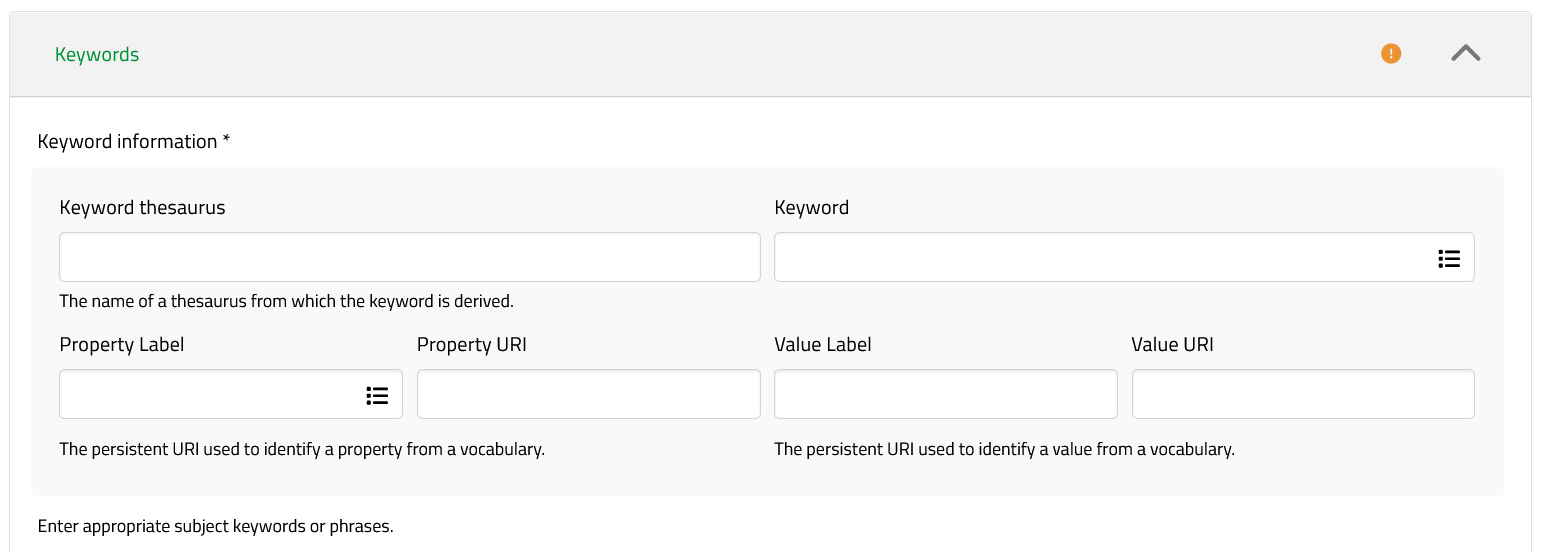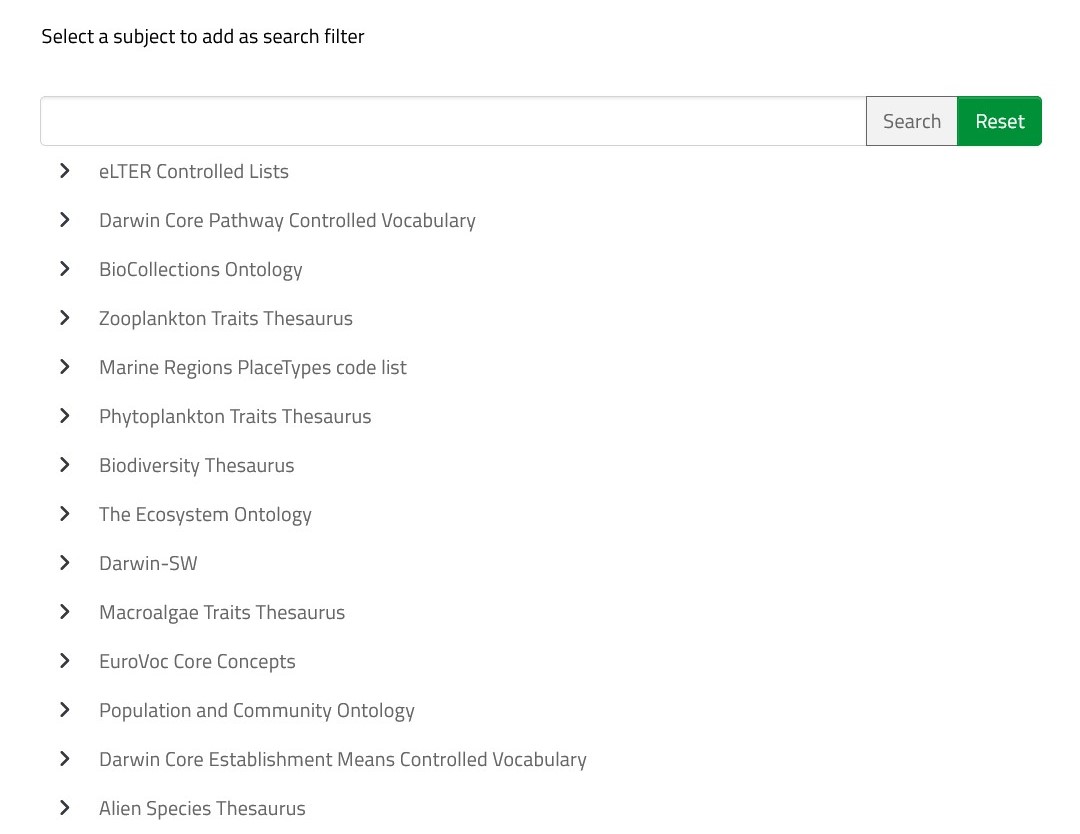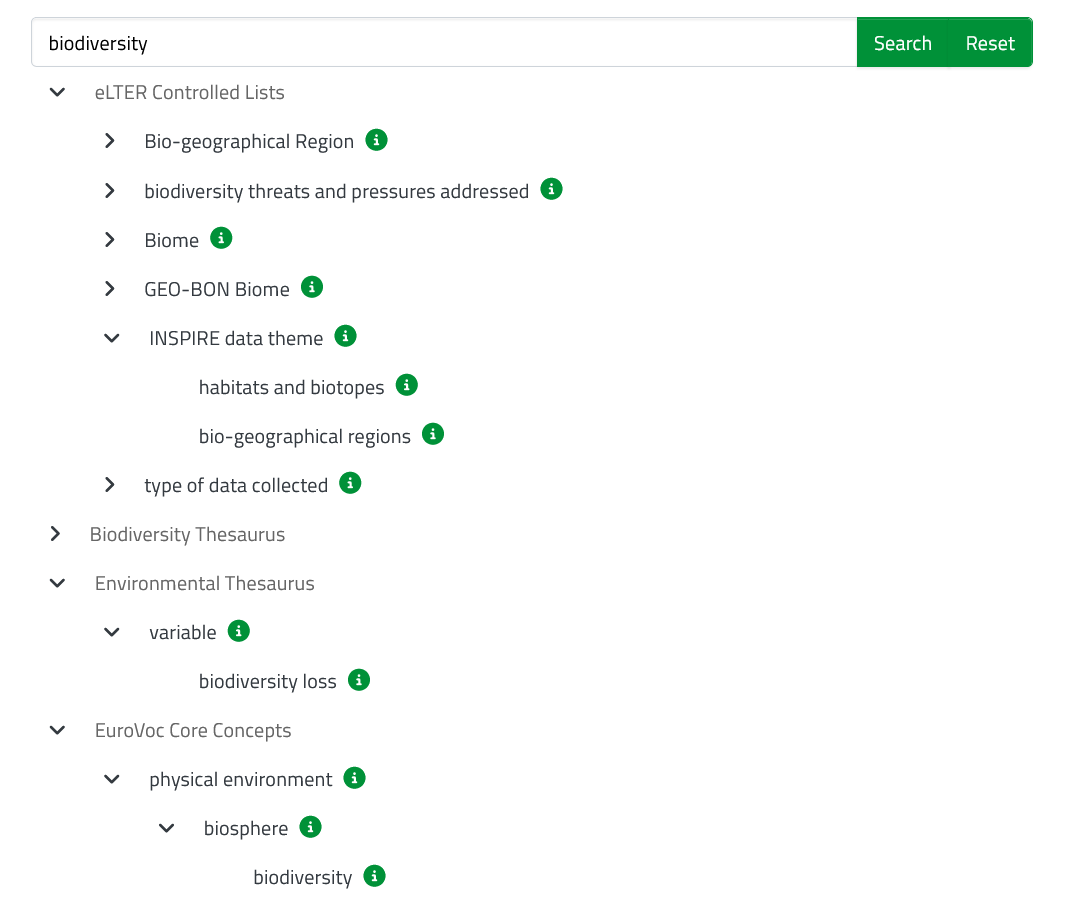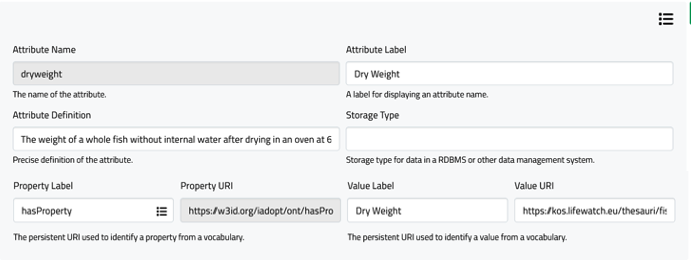Overview
LifeWatch Italy serves as the Italian Distributed Center for the LifeWatch ERIC Infrastructure, contributing significantly to the ERIC's functionality. Focused on biodiversity and ecosystem research data management, LifeWatch Italy enhances data sharing, integration, and analysis through its Data Portal and Metadata Catalogue.
Recent efforts by LifeWatch Italy aimed at improving FAIRness involve integrating EcoPortal, a semantic artefacts catalogue, with the Data Portal and Metadata Catalogue. EcoPortal supports the scientific community in managing semantic artefacts in the ecological domain and employs the Ontology FAIRness Evaluator (O’FAIRe) tool for FAIRness assessment. Challenges we are trying to address include enhancing metadata annotation with FAIR semantic artefacts. The expected impacts of the integration between EcoPortal and the new Data Portal and Metadata Catalogue of LifeWatch Italy encompass easier ecological data discovery, annotation, machine-actionable meta(data), and a push towards Linked Open Data.
Context and objectives
LifeWatch Italy (LW ITA) is the Italian Distributed Center of LifeWatch ERIC e-Science infrastructure for biodiversity and ecosystem research and contributes in-kind to its functioning. LifeWatch Italy activity focuses on the management of biodiversity and ecosystem research data, as well as the development of tools and services for their sharing, integration and analysis. Among the different offered services, LW ITA provides the
The Data Portal is a data repository, based on DSpace, that provides FAIR data and metadata. It helps scientists to share their (meta)data and also to reuse data created by others. The data schema is based on the Darwin Core standard and controlled vocabularies. The metadata schema associated with each dataset is the Ecological Metadata Language profile LifeWatch (EML 2.2.0; Vaira et al., 2022).
The LifeWatch Italy Metadata Catalogue is an information management system based on GeoNetwork 4.2.2, designed and implemented to enable access to several resources from a variety of providers through descriptive metadata, enhancing and promoting the information exchange and sharing among organizations and researchers. The LifeWatch Italy Metadata Catalogue gives access to different resources and their metadata that are based on two main standards:
• ISO 19139 (VREs, services, workflows and research sites);
• EML 2.2.0 (datasets).
Each metadata profile is organised in sections, which reflect the main information related to each specific resource. Each section contains optional and mandatory metadata elements (Vaira et al., 2022).
One of the objectives of the last implementation was to provide a new version of the Data Portal and the Metadata Catalogue and also integrate both with EcoPortal. The integration aimed to ensure the annotation and description of (meta)data using semantic artefacts.
EcoPortal uses an advanced version -collaboratively developed and experimented in FAIR-IMPACT– of the OntoPortal technology. It supports the scientific community in the creation and management of semantic artefacts and their use to harmonise (meta)data. The recent updates of EcoPortal have supported the improvement of the metadata schema (MOD 2.0) associated with semantic artefacts and its alignment with other catalogues and repositories (Tarallo et al., 2024). In addition, the integration of the Ontology FAIRness Evaluator (O’FAIRe) tool enables the assessment of the FAIRness level of semantic artefacts through a metadata-based automatic FAIRness assessment methodology (Amdouni et al., 2022).
Challenges and implemented solutions
We aim to implement a standardised annotation process in the LifeWatch Italy Data Portal and Metadata Catalogue for several metadata attributes, including keywords and dataset variables. The first requirement is to enable data exchange between these repositories and EcoPortal, where users can find semantic artefact terms to use for unambiguous annotation.
The second requirement is to develop a friendly User Interface (UI) for integrating property and value of metadata attributes with semantic artefact term URIs, labels and definitions. We also want to ensure that the semantic artefacts in use are FAIR, meaning they are findable, accessible, interoperable, and reusable by both humans and machines.
The integration involves implementing a REST API connector, using HTTP GET calls, to link the metadata wizard of the Data Portal and Metadata Catalogue with EcoPortal. This will improve (meta)data management to ensure FAIR compliance. The integration allows (meta)data providers to select attribute values for the metadata schema directly from semantic artefact terms published on EcoPortal by autocomplete features to enhance usability. The semantic artefacts are continuously updated on a regular basis, ensuring they remain accurate and relevant over time.
Figure 1 shows the semantic annotation within the Data Portal for the “Keywords” attribute. The same process is available for other attributes like “Software” and “Protocol”. Users can access (Fig. 1a, b) and search (Fig. 1c) concepts and classes from semantic artefacts published within EcoPortal through a wizard. Users can select concepts and classes that are then reported, with their URI, inside the “Keywords” element (Fig. 1d).
A similar approach is followed for the attributes of the data table but it differs from the previous one because the definition of concepts or classes is also retrieved and is reported inside the element set as shown in Figure 2.





The "attribute definition" is retrieved directly from EcoPortal.
The process to obtain the semantic annotation within the Metadata Catalogue is shown in Figure 3. Users can search for concepts and classes directly in the search box (Fig. 3a). These fields are configurable by administrators to retrieve data from external resources (i.e., EcoPortal), enabling the autocomplete feature for filtering the list of occurrences and the possible value to be used (Fig. 3b).


Expected/measured impacts
The implementation of API connectors in the Data Portal and Metadata Catalogue, which support data providers to search for SA terms and retrieve URIs and labels directly within metadata submission forms, brings several key advantages to LifeWatch’s data governance and management:
- Improved Synergy: This integration enhances collaboration across multiple platforms that are crucial to LifeWatch Italy’s data management cycle.
- FAIRness Improvement: Expecting increased scores in key FAIRness assessment metrics used by the F-UJI tool integrated into the Metadata Catalogue, specifically:
- FsF-I2-01M: Metadata uses semantic resources
- FsF-I3-01M: Metadata includes links between the data and its related entities
- FsF-R1-01MD: Metadata specifies the content of the data
- Increased Reuse of SA Terms: Anticipating a rise in the reuse of SA terms from EcoPortal, promoting more consistency and interoperability across (meta)data.
- Enhanced User Satisfaction: Simplifying the annotation process is expected to improve satisfaction rates among data providers and managers by offering a more efficient workflow.
- Better EcoPortal Visibility: Anticipating increased visibility and reuse of EcoPortal’s SAs, driving wider adoption across the LifeWatch ecosystem
With this new functionality, we can plan to harmonise and standardise the annotation process to enhance interoperability across all (meta)data assets.
Reference materials
Amdouni E., Bouazzouni S., Jonquet C. (2022). O'FAIRe makes you an offer: Metadata-based Automatic FAIRness Assessment for Ontologies and Semantic Resources. International Journal of Metadata, Semantics and Ontologies, 16 (1), 16-46. https://hal-lirmm.ccsd.cnrs.fr/lirmm-03630233
Di Muri, C., Pulieri, M., Raho, D. Muresan A.N., Tarallo A., Titocci J., Nestola E., Basset A., Mazzon S., Rosati I. Assessing semantic interoperability in environmental sciences: variety of approaches and semantic artefacts. Sci Data 11, 1055 (2024). https://doi.org/10.1038/s41597-024-03669-3
Tarallo, A., Pulieri, M., Ramezani, P., & Rosati, I. (2024). Advancements in EcoPortal: Enhancing functionalities for the ecological domain semantic artefacts repository. FAIR Connect, 2(1), 1-7. DOI: 10.3233/FC-240002
Vaira, L., Fiore, N., & Rosati, I. (2022). LifeWatch ERIC Application Profiles (Version 1). LifeWatch ERIC. https://doi.org/10.48372/8528-9Z45




